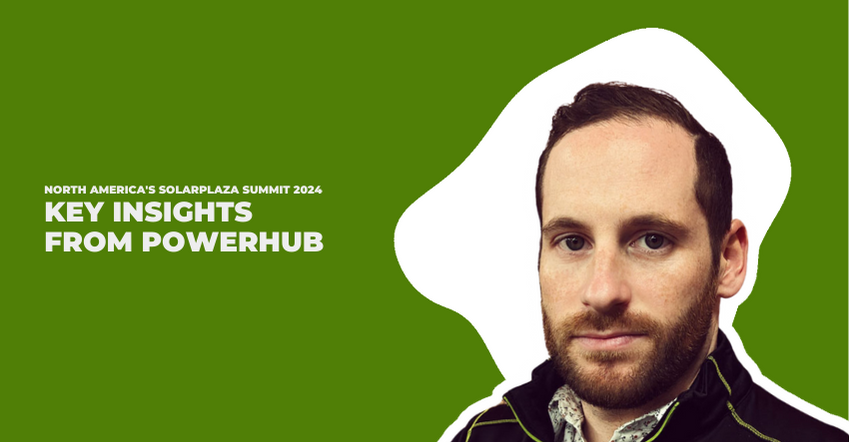Investing in Renewable Energy
Typically, when we talk about investing in renewable energy, we’re talking about investing in private companies that develop and/or own renewable energy facilities. They’re not companies purchased on a stock exchange (although some are), they’re investments in either specific projects, or in an Independent Power Producers (IPP).
These are companies that develop and build projects to generate electricity (and/or ancillary services), and sell it to utilities, and/or to large corporations with substantive power needs.
Since investment in renewable energy is on the rise globally, we thought you might benefit from a few handy guidelines.
What Stage Is My Renewable Energy Investment At?
Investments in renewable energy happen at different stages, and each stage has its own risk profile. If you’re investing in an operating asset that’s fully installed and financed, with a strong traditional or virtual Power Purchase Agreement (PPA) behind it, you’re dealing with a pretty simple asset.
It’s generally considered low risk, cash flows are predictable, and there’s a 20-year plus lifespan for the investment. Companies with low-risk appetites (like pension funds or life insurance companies) tend to be most interested in this type of operational asset, because while the returns on investment might be lower, the risk profile is also low.
Investing in projects at earlier stages (still in development) can still be fairly low risk (for instance, if it includes a strong PPA in place with a developer that has a proven track record in the market) to fairly high risk (no PPA yet, or in a market where the regulatory process isn’t as well established).
What Government Processes Are in Place?
These stages depend entirely on the sophistication of the program that’s been established. Many, if not all, renewable projects leverage established government programs that do one of three things: 1) simplify the regulatory process to encourage renewable energy projects, 2) simplify the process of getting a power purchase agreement, or 3) provide competitive funding incentives.
If it’s the first— a simpler regulatory process—you’re likely in a market with a clear series of studies, and bars to meet in order to build a renewable project. You have a clear roadmap. Based on this established process, you can understand the risks, evaluate the available pieces of land, and judge whether or not you can build a project.
In the second situation, where it’s easier to get a power purchase agreement, the path is hopefully being paved for you to sell power, and better predict revenue. There are a ton of different mechanisms to sell the energy you’re producing (bids versus reverse auctions, for example), and the more straightforward and predictable those processes, the easier it is to de-risk developing and investing in renewable energy.
For example, if you’re going into an auction, you know you have to drive down your cost, so you evaluate your project against a reasonable bid. If you’re going into a market situation, where you’re dealing with power-price fixations, there’s more risk involved.
Essentially, you’re trying to predict the long-term price of electricity in the next two decades. Given how unfortunately political markets can be, this price might be largely unpredictable.
What Should My Developers/Operators Know?
In an earlier blog, I discussed “bankability”, specifically, the types of documents you should have on hand, and what makes a renewable energy project “bankable.” But it’s about more than just having the paperwork in order—it’s equally as important to have them structured in a way that tells a good and complete story. A poorly laid out narrative, with holes and unanswered questions, is problematic. It’s about trust, and if that isn’t established early in the investment decision, it will be tougher to make. No projects are without flaws; expect nuances, gaps or missing information, but equally expect a good explanation and plans to mitigate any identified risk.
What do I mean by gaps? Lost drawings, loss of historical records that explain outages on facilities, missing amendments…all of these things put a project at risk. They can create uncertainty that no one can price or plan for, negatively affecting your sale.
The Questions Renewable Energy Investors Should Ask
As an investor, your team should understand the nature of the contracts in place—especially the contract to buy/sell power. You need to be clear on the underlying regulatory principles, so that you know the factors that can change, and what the risks are. You need a clear understanding of what can happen with the project after the PPA expires, as well.
Consider also the financial structure of the project (its risks and rewards), the nature of the debt (some is locked down, some needs to be refinanced), and the underlying fundamentals of how the project was built (how and by whom, and with what). You should have access to and understand the as-built drawings and the permitting documentations. If this seems thorough, that’s because it is—the last thing you need is a surprise, especially when it comes to the agreements in place.
With any investment, surrounding yourself with experts is a best practice, whether it’s for a project or a portfolio. You need to understand the nuanced differences between the projects, and how they operate. These differences, the profit-cutting problems they can lead to, and how they can be addressed can have a huge impact on your portfolio’s ROI. One of the most overlooked costs in a portfolio is the cost to manage it. This cost is never considered in the project financials and oversight of the projects can be expensive, especially if each of them has different compliance requirements, conditions, invoicing or reporting needs. Managing a few can be easy but it’s volume that becomes problematic. Tracking all the details can be a monumental task and this can’t be managed in excel, too many moving pieces, and chances for errors.
How to Manage It All
The tips written above can help you consider renewable energy investments in an ideal scenario. There are so many different types of projects, operators, and investors.
No matter which part of the equation you’re part of, centralizing and standardizing your documents will go a long way. It’s important to make sure that all teams (purchaser, seller, investor, engineer) benefit from transparency, especially when it changes hands.
Want to learn more about investing in renewable energy, and managing your investment after the fact? Reach out to us today.




